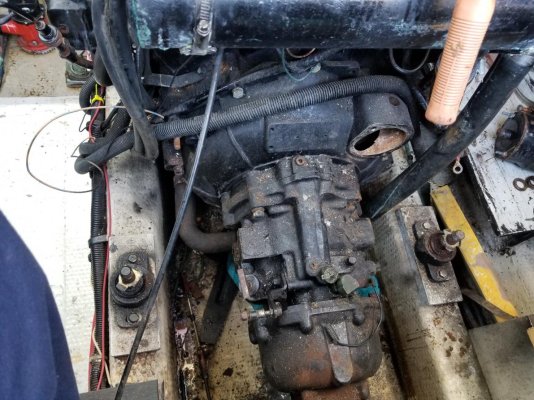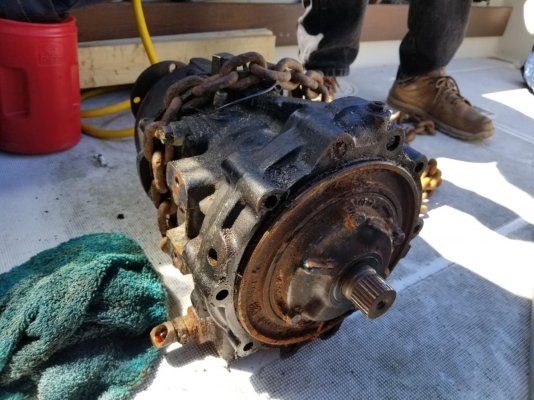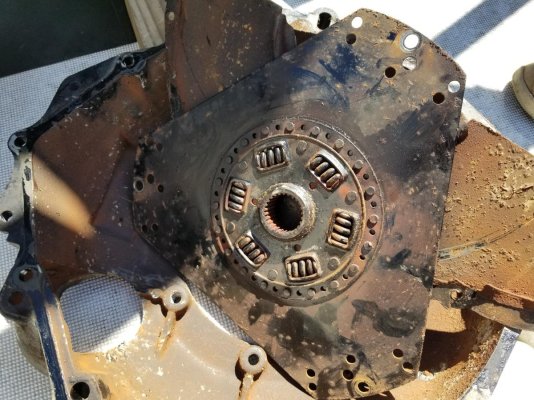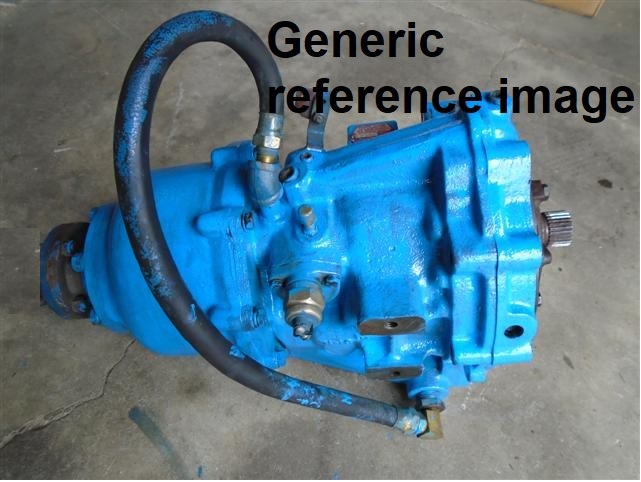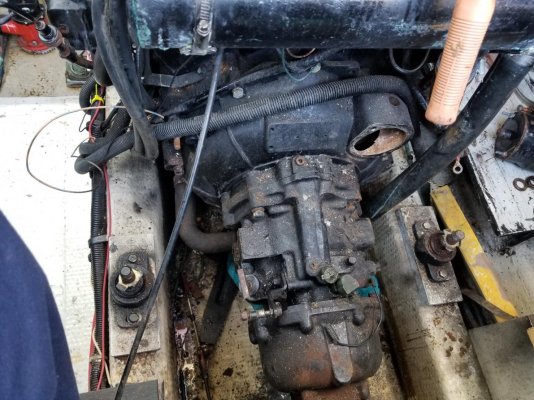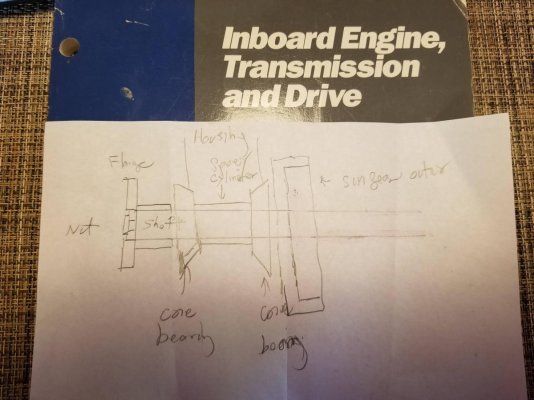Hi, got it apart. The damper plate is not cracked, but it seems to be worn out. One of the springs is very loose, it has been shedding rust all over the inside of the bellhousing and it is very dry, not oily. I figure when it spins around, it is snapping and crackling on itself.
Transmission feels very tight and smooth and noiseless when turning by hand. The new plate, I will soak in gear oil, you know it is a moving part within itself under pressure.
It took 3 hours to get it all apart. Reason was, the trans was corroded into the bellhousing. Could not separate it. Finally I decided must unbolt bellhousing with trans. What made that hard was the shield plate on bottom is held on with 9 1/4 inch bolts, and they are hard to get to with trans in the way.
Then when we got the combo off together, I beat the bellhousing off trans with a hammer.
It has the triangular damper plate, so we are ordering the better round plate, and yes, only 3 small bolts hold it on the flywheel.
I was looking at the pics, glad I took some, and was wondering, how to tell which way the damper faces?
Does that Basic Power part I linked seem like the right one to you?
https://photos.app.goo.gl/8vZcx5yw6qxAjXoF8
